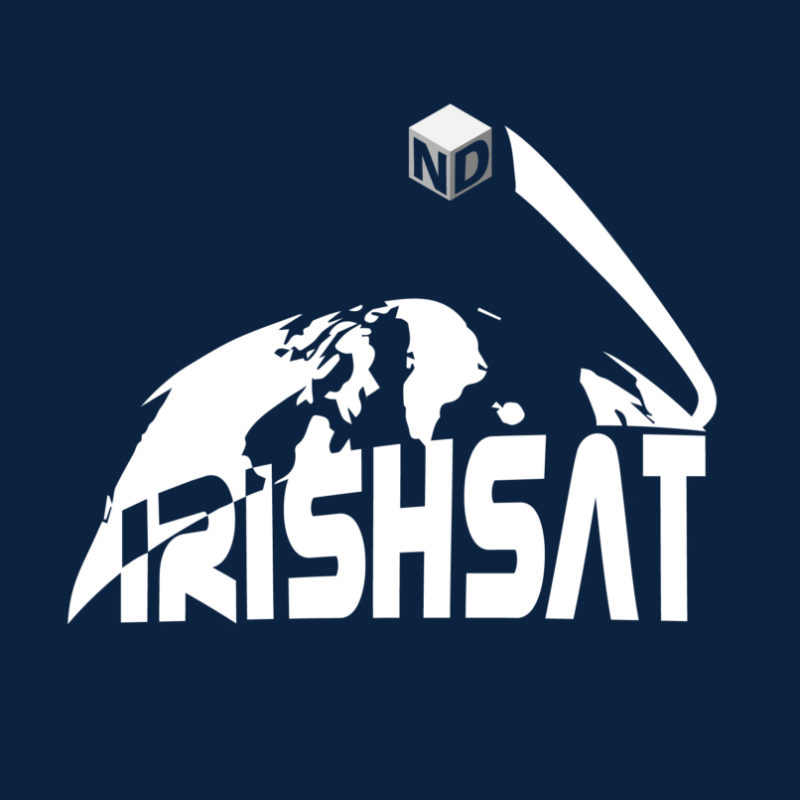Electrical engineering and aerospace engineering students have formed a new club called ND IrishSat. Their ultimate goal is to launch a cube-shaped nanosatellite as part of NASA’s CubeSat Launch Initiative (CSLI) to conduct research investigations in space.
Through the CSLI, developers from NASA Centers, U.S. not-for-profit organizations, and accredited U.S. educational organizations are given the opportunity to write a proposal to design, build, launch, and operate a CubeSat nanosatellite that will fly as an auxiliary payload on a planned mission or be deployed from the International Space Station. The initiative gives students, teachers, and faculty opportunities to develop in-flight hardware. This hardware allows them to conduct scientific research and demonstrate technology in an inexpensive and easy way in topic areas aligned with NASA’s Strategic Plan.
The seed for IrishSat was planted in “Introduction to Embedded Systems and the Internet of Things” (EE 10115), an undergraduate electrical engineering course taught by Professor Scott Howard. A popular course, it fulfills the bachelor’s degree requirement for project design. Last spring, a student team in the course was tasked to create a high altitude weather balloon. The assignment included designing and building electronics, sensors, and radios to mount onto the frame of the balloon that they would fly to 100,000 ft. high with the goal being to conduct testing, collect data, and run experiments. At this altitude, however, low pressure and temperature create space-like constraints on monitoring technologies.
With the parameters and challenges in mind, the team began working to develop a sensor to study clouds and air moisture. They were far along in their design process, had obtained the required radio license, and were working to get FAA clearance to launch when the COVID-19 pandemic shut down campus.
At the same time the electrical engineering students were working on their weather balloon project, Owen Kranz and Will Karpick — both aerospace engineering undergraduates who had been on the ND Rocketry Team — were interested in the CSLI and wanted to start their own CubeSat club. They began their search for a faculty advisor and found a perfect fit with Professor Howard, his research, and the high altitude balloon class project.
“There are a lot of opportunities for interdisciplinary involvement with the CubeSat Initiative throughout the University, not just in the College of Engineering,” said Howard. “Broad science research could be conducted in chemical sensing, earth sensing, ecology, and environmental science. There are important roles for the humanities as well, from industrial design to examining how space exploration influences art. We envision this to be a bigger activity down the road.”
Technically a “design team,” ND IrishSat became official this fall. The club consists of about 30 students from engineering, science, and business and is divided into four working groups or squads: power and computing, communication, scientific payload, and structure and orientation. Kranz, who serves as chief engineer, sets the goals for the club and creates design challenges to keep the group on task.
“The main point is to get people to develop systems typically found on real satellites. It’s nice for students to have a challenge with specific design constraints that we will use on our balloon and, ultimately, our satellite,” he said.
The club is creating solar panel structures, studying student-made integrated circuits and how they decay over time in lower orbit, and designing a reaction wheel control system that will provide torque on the body of the satellite.
According to Kranz, it will take about two years to “manifest” or launch their first CubeSat, but the long-term goal of the club is to get a CubeSat manifested every year after that. This year, their objectives are to design and build a ground station on the roof of Fitzpatrick Hall and to successfully launch a high altitude balloon with all systems designed by club members and built with payloads to collect preliminary data.
The team hopes to submit a proposal to NASA next year and begin work to manifest the first ND IrishSat. Ambroise Curutchague, an electrical engineering undergraduate and co-lead of the communication squad, is excited about the club’s future.
“ND IrishSat will be a club with serious staying power because we’re starting with a great foundation: strong leadership, good ideas, and smart people.”
